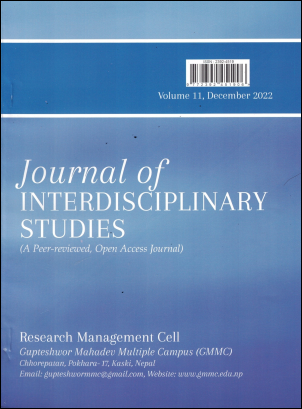Role of Remittance in Gender Transformation- A Study of Women Labor Migration in Pokhara Metropolitan City
DOI:
https://doi.org/10.3126/jis.v11i1.58675Keywords:
Migration, Remittances, Gender, Households transitionsAbstract
The power, authority, and empowerment attained with the aid of economic capitals not only aids in the transformation of gender roles, but social and cultural capital also facilitates various facets of life, including: the standard of education, the types of employment involvement, the level of awareness, the types of family living, and the modes of interaction. As a result, both benefits and drawbacks can be found in the daily lives of both migrants and non-migrants due to the growing trend of female labor migration. In a traditionally patriarchal nation like Nepal, the migration of women for labor raises moral concerns about their moral decency as they struggle to reintegrate into their families and communities. The gender shift in the slum community of Pokhara Metropolitan City, Nepal, is the main emphasis of this paper's examination of the various features of remittances and ways through which they are transferred. Particular focus is placed on the conversion of economic capital into social and cultural capital as well as the function of proxy managers in managing household duties and remittances. Data from both secondary literature and original sources are used to support the arguments made here. The data came from 199 households of women migrants' families who had moved away at least three years prior to the survey, which was conducted between March and July 2022. The data collecting and analysis techniques used were both quantitative and qualitative. The numerous facets of remittances are examined in this paper. The findings explain the diverse forms of capital accumulation and how women gain more influence in various spheres of social life. The study also offers a more nuanced view of how women are becoming more involved in household decision-making as a result of economic empowerment and how to address forthcoming socio-cultural barriers that prevent their engagement in public sphere.




